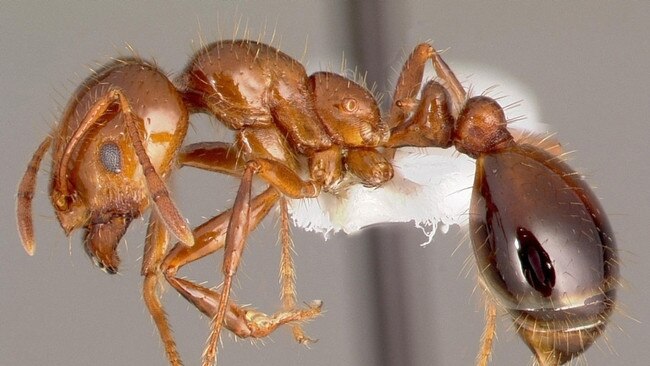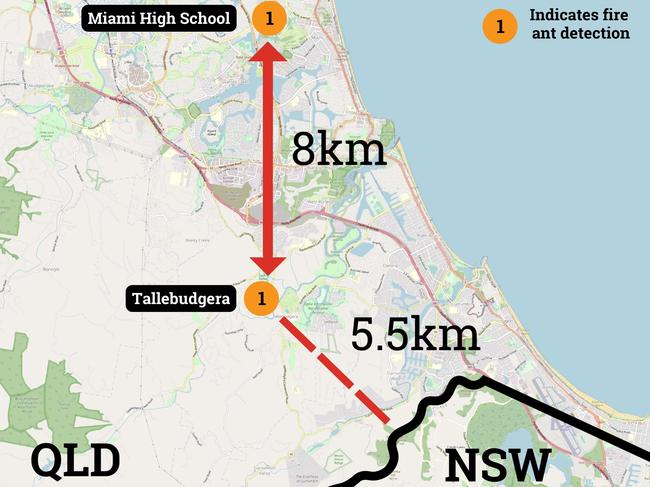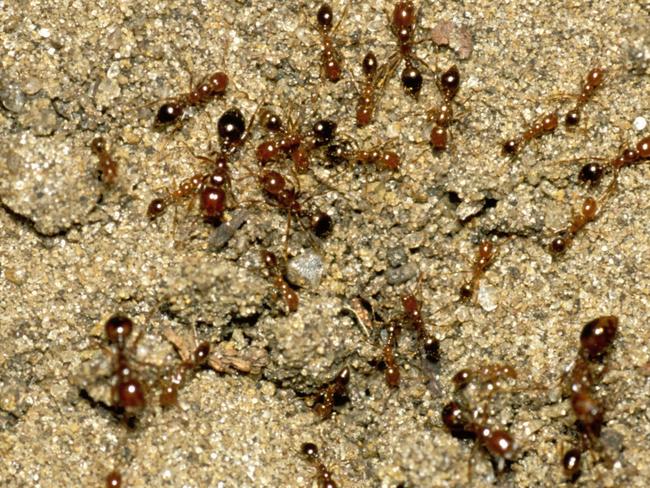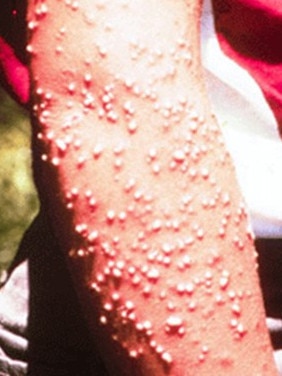Extra workers to help halt southward march of fire ants
Hundreds of new workers will be employed to halt the spread of fire ants.

An army of 350 new workers will be employed under new federal funding in a bid to stop the southward march of red fire ants threatening to spread from Queensland.
The federal government will provide $268m over the next four years to tackle the pest, which has spread throughout southeast Queensland since it was first detected at the Port of Brisbane in 2001.
Eradication of the ants, which pack a painful sting, will remain the aim of the government, which has come under pressure in recent months as the ants moved closer to NSW. In July, a fire ant nest was discovered in a Gold Coast backyard just 5.5km from the border.

“Fire ants are a threat to our community, our economy and our kids and that’s why we’re doing everything we can to eradicate this pest,” Treasurer Jim Chalmers said.
“Without the program, fire ants would now infest around 100 million hectares in an arc of country from Bowen in the north, west to Longreach and south to Canberra.
“If they aren’t eliminated, these ants will quickly migrate across the country and that would cause economic, health and social impacts in excess of $1.25 billion annually, forever.”
As well as the 350 new workers, the funding will pay for a new depot, new vehicles, new aerial eradication contracts and an extra 1400 tonnes of bait each year, effectively doubling the size of the treatment and surveillance area.

The Invasive species Council has previously been critical of a lack of funding for an eradication program.
A review paper prepared for the government estimated that at least $200m to $300m was needed every year if the ants were to be eradicated by 2032.
The same review said that if the ants were to spread throughout the country, one in three Australians would be stung each year.
Fire ants, which are native to South America, pose a serious risk to farms and are capable of forming rafts to float down rivers and floodwater, increasing their spread.

“We will do everything we can to help Queensland and the rest of Australia win this fight,” Agriculture Minister Murray Watt said.
“Fire ants are one of the world’s worst super pests and have the potential to spread across 97 per cent of Australia. They have the potential to do more damage to our agriculture and environment than all of the worst invasive pests combined.”
Senator Watt said funding was expected to be added to by state and territory governments.
National Party leader David Littleproud said the funding was not enough.
“The Response Plan in July said $593 million was required over the next four years to control the pest, including immediate funding for 2023-24,” Mr Littleproud said.
“The National Red Imported Fire Ant Eradication Program strategic review also estimated that at least $200 to $300 million per year was required. Labor’s funding was needed four months ago, which puts the time-critical response at risk. Unfortunately, the lack of action and the delays in funding undermines previous work that had been done under the Coalition Government.”



